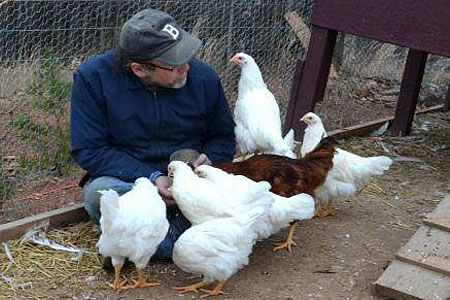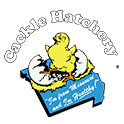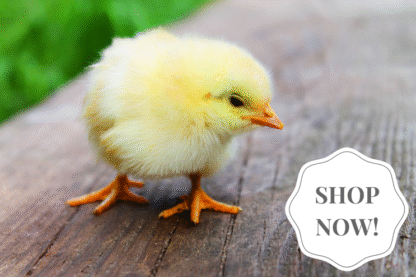
A pullet’s nutritional needs vary with her stage of growth. A pullet that is nutritionally deficient, and therefore too thin at maturity, won’t be able to consume enough dietary protein to both lay eggs and continue growing. As a result, her first eggs will be delayed, and they will be smaller and fewer than normal. On the other hand, a pullet that grows too fast gains too much fat by the time she starts to lay. She likewise lays fewer and smaller eggs, and tends to have laying problems such as egg binding or prolapse. Here’s how to feed pullets for optimal egg production:
0-6 Weeks
Pullets grow fastest during their first few weeks of life. They therefore need a high protein, high energy ration.
Protein is necessary for bone, muscle, organ, and feather development. Since proteins make antibodies to control infections and diseases, they also ensure a robust immune system.
Dietary energy, on the other hand, fuels all of a chicken’s normal activities throughout the day. Energy comes mainly from carbohydrates and fats. Since chickens eat until they meet their energy requirements, the energy content of a ration determines how much they will eat. A ration that is too high in energy and too low in protein results in stunted growth.
Chick starter ration containing 18% to 20% protein (depending on brand) is formulated for this stage of a pullet’s life. Good early growth helps pullets later achieve normal mature weight, start to lay eggs at the proper time for her breed, and lay for longer periods.
Each feed brand is formulated a little differently. Whatever brand you find available locally, their recommended feeding program should be outlined on the label.
6-14 Weeks
After the first six weeks or so, pullets need a slightly reduced level of both protein and energy to maintain a healthy growth rate without putting on fat. By the end of this period, pullets should have achieved the majority of their tissue growth and body structure.
To feed pullets during this stage, a pullet grower ration contains 16% to 18% protein. However, not all farm stores carry a separate pullet grower ration. Instead they will likely have an all-purpose starter/grower ration, in which case you have two choices. You could continue to feed the same ration throughout this period of growth.
Or you could introduce a grain, such as whole oats, to increase energy intake and offset the protein level. To determine how much grain is appropriate, and handy Pearson’s Square calculator is available online, along with a list of the protein levels of various supplemental grains.
14-20 Weeks
During this period the pullet’s reproductive tract develops to maturity in preparation for egg production. Muscle growth has slowed, and any rapid weight gain would result in excess fat.
A 14% to 16% pullet developer ration, again, has slightly reduced protein and energy. The reduced energy content means the pullets will eat more, which increases their digestive capacity. As with grower ration, where a developer ration is unavailable your choices are to continue with starter/grower or to introduce a bit more grain per Pearson’s Square.
20+ Weeks
As a pullet approaches sexual maturity, estrogen kicks in. About 2 weeks before she lays her first egg, her system switches from developing structural bone to packing estrogen-dependent medullary bone with calcium. From that point on, as long as the hen continues laying, medullary bone provides some of the calcium she needs to develop strong eggshells.
A layer ration contains increased calcium. However, some hens need more calcium than others. So always provide a calcium supplement, such as crushed oyster shell, in separate free-choice hopper to ensure healthy egg laying.
Egg production also requires an increase in protein. A layer ration with a protein content of between 16% to 18% encourages consistent laying of eggs. It also helps maintain a healthy body weight and good feather condition, as well as a strong digestive system and robust immunity.
Layer feed is for healthy hens with good egg production. It is not designed for balanced growth in pullets. Never feed a layer ration to pullets before they reach the age of lay. The higher calcium content can interfere with bone formation and result in weak legs, kidney damage, and possibly death. Since different breeds start laying at different ages, avoid guesswork by waiting until you see the first eggs before switching to layer ration.
Adjusting Rations
Note that industrial egg producers feed pullets for optimal egg production by switch from one ration to the next based on the pullets’ body weight, not their age. Chicks and pullets are therefore weighed at regular intervals. Although age is a slightly less exacting measure of growth, it is a far easier method for backyard flock owners.
Whenever you adjust your flock’s diet, make the change gradually. Too rapid a change can cause intestinal upset and diarrhea. An easy system is to mix equal amounts of the old and new feed for a week or so before fully transitioning to the new feed.
Helpful Links
When To Expect Your Hens to Start Laying Eggs
Layer Breeds from Cackle Hatchery®
And that’s today’s news from the Cackle Coop.
Gail Damerow has written numerous books about keeping poultry, many of them available from the Cackle Bookstore.

